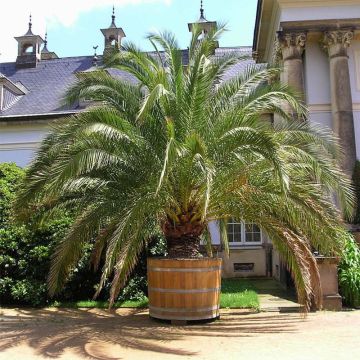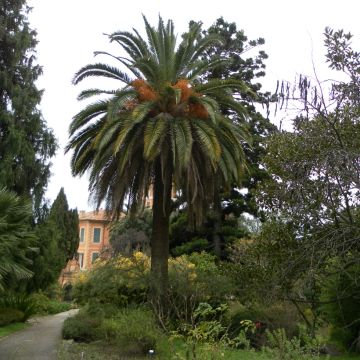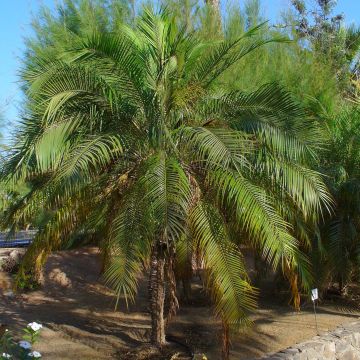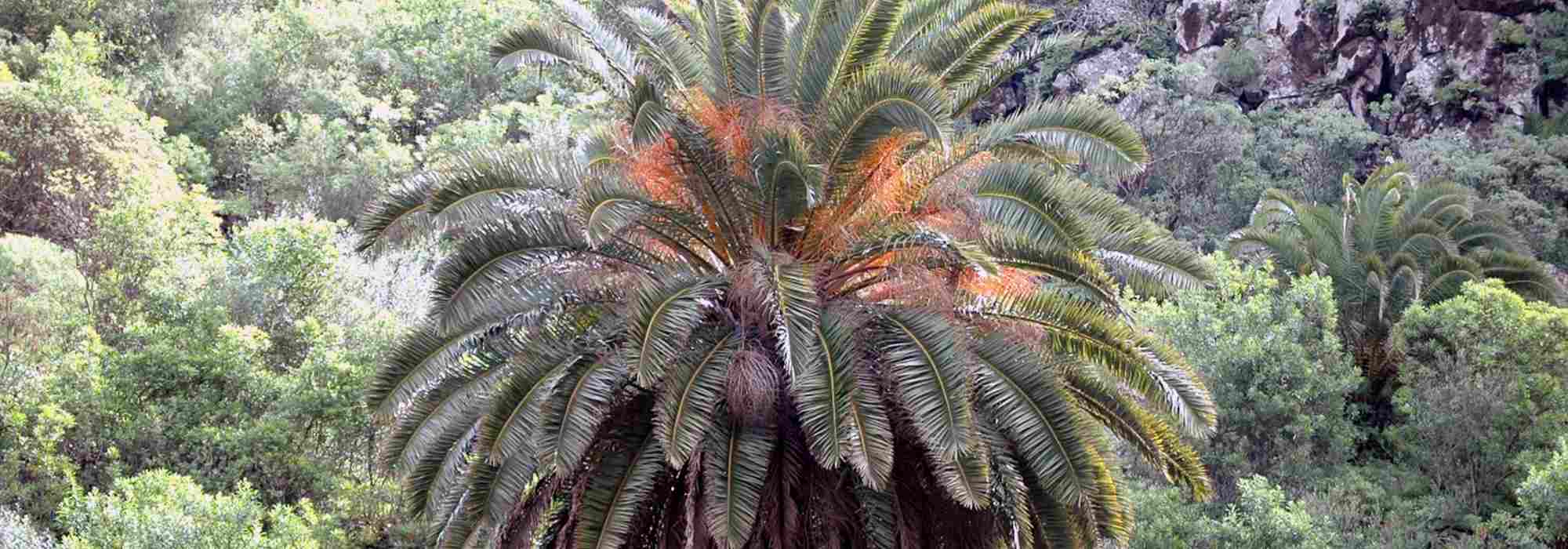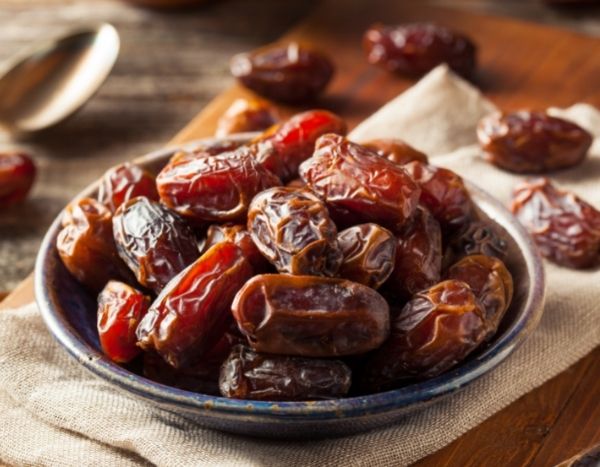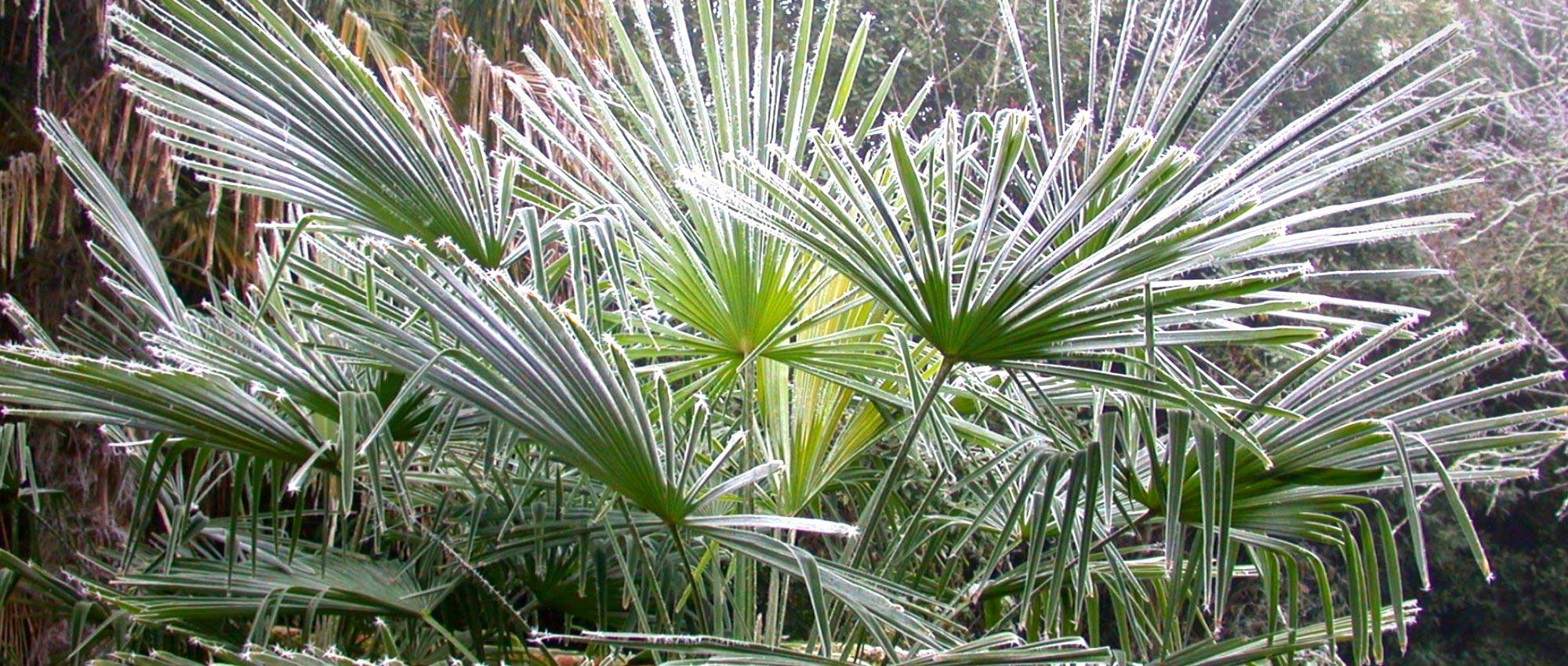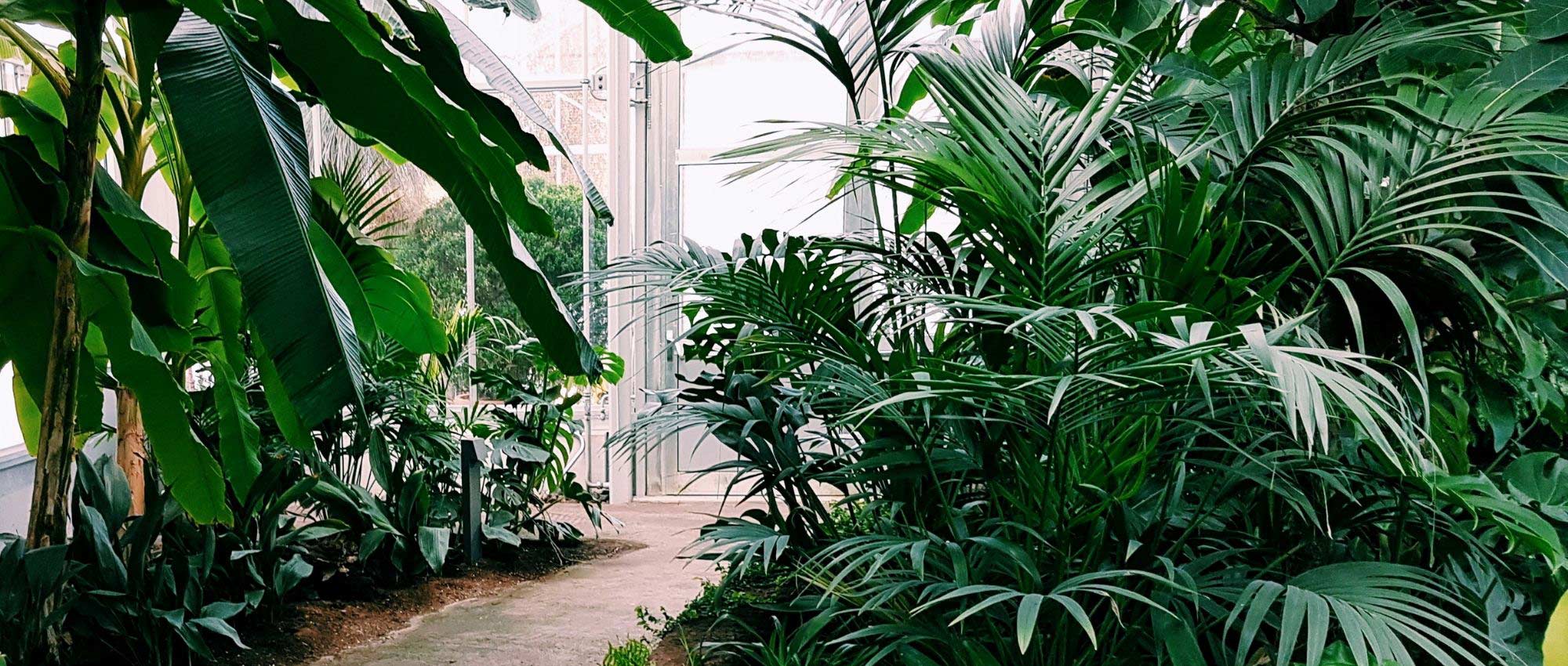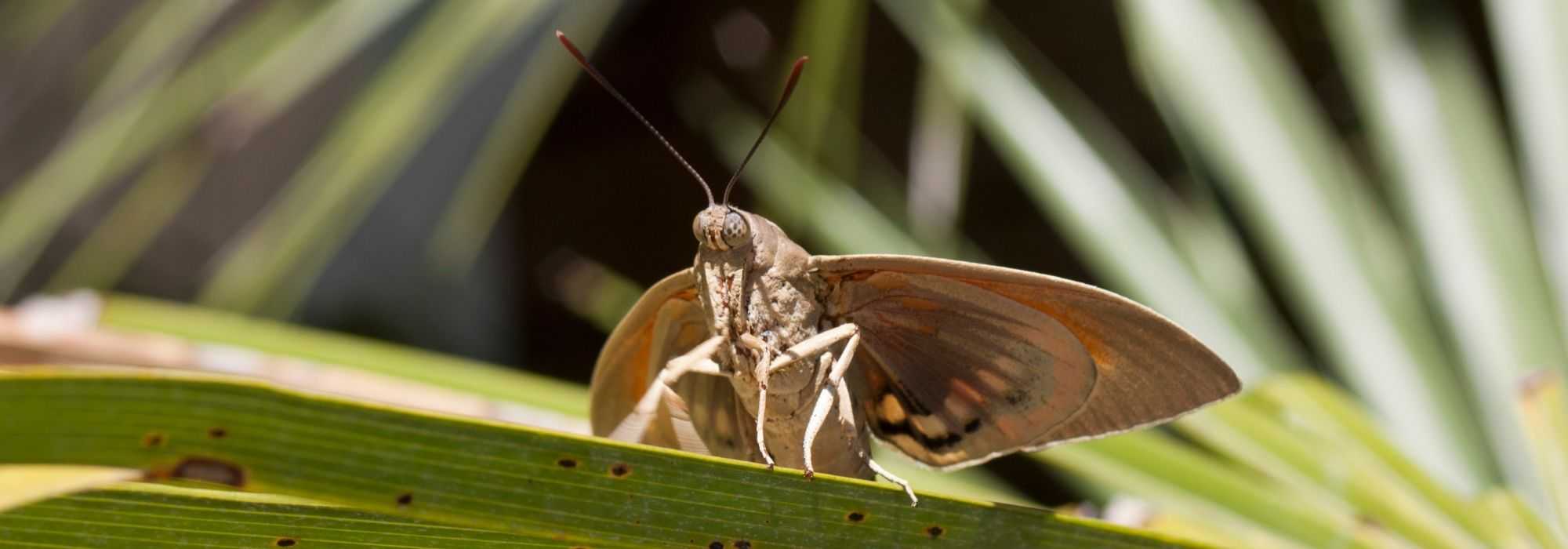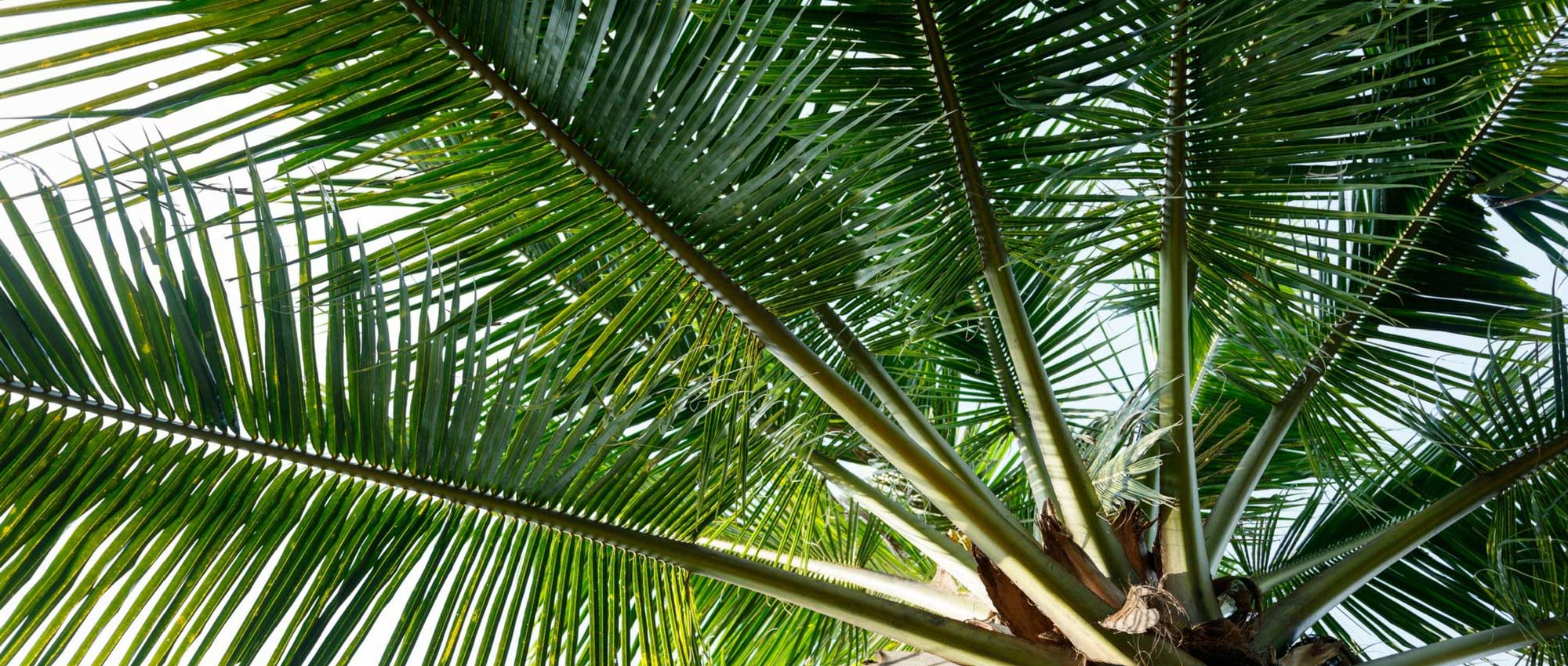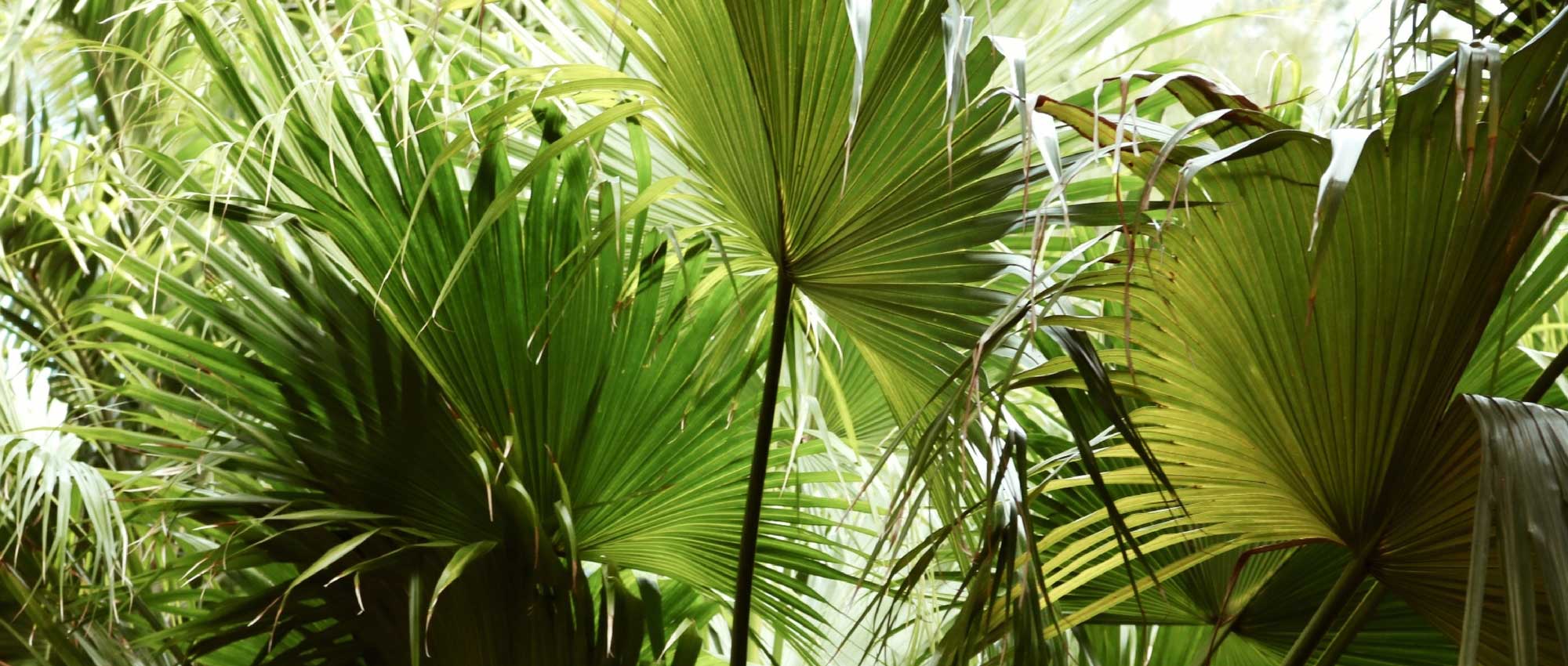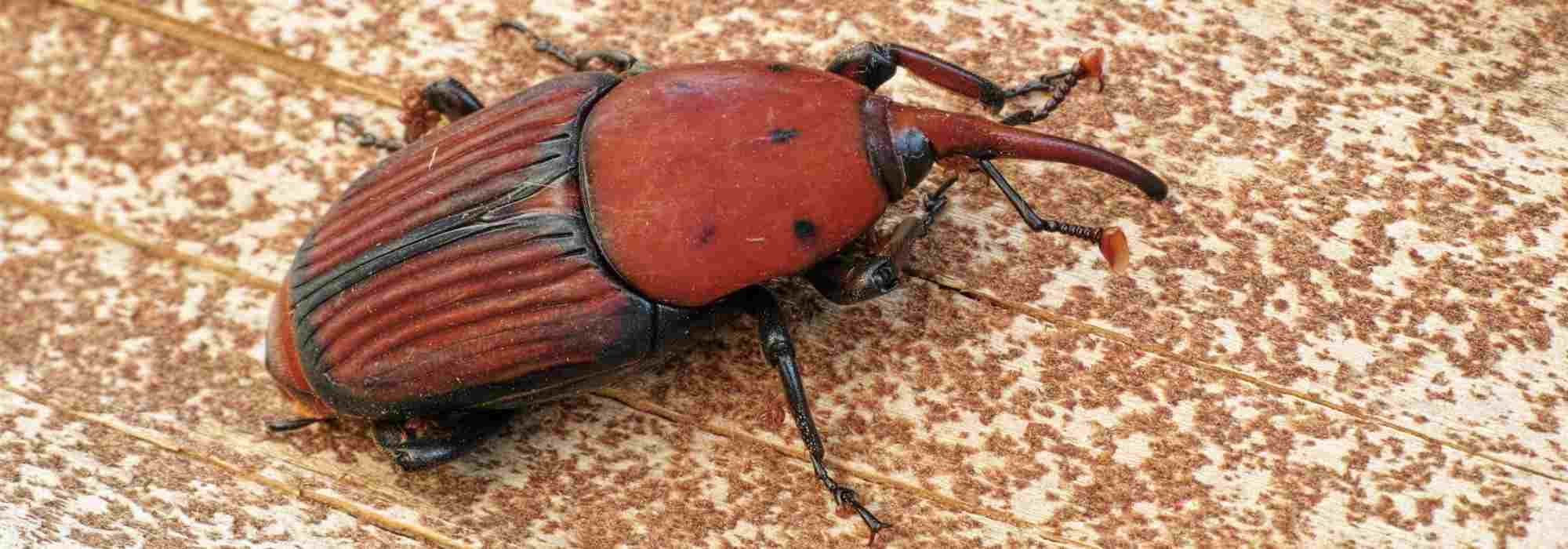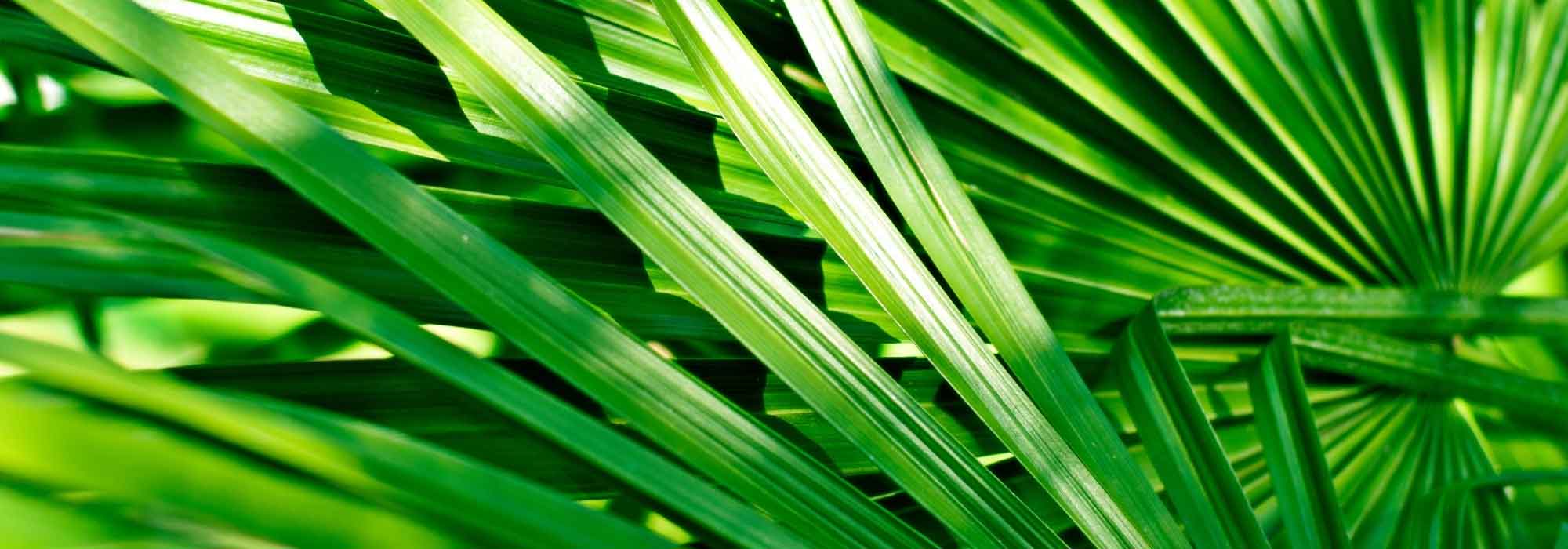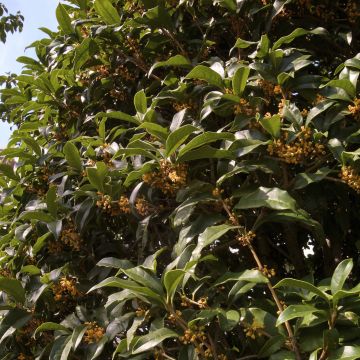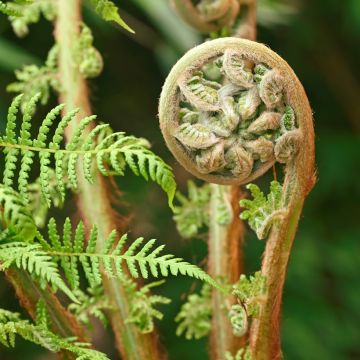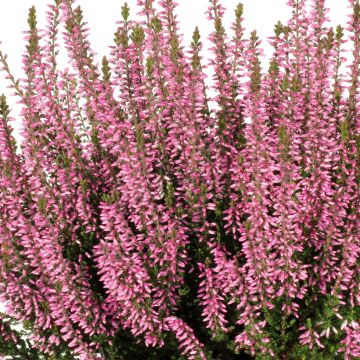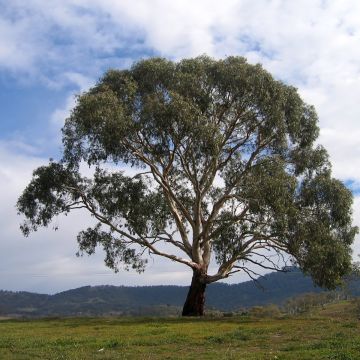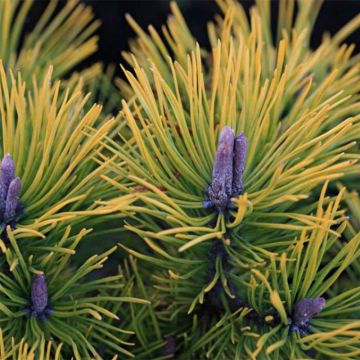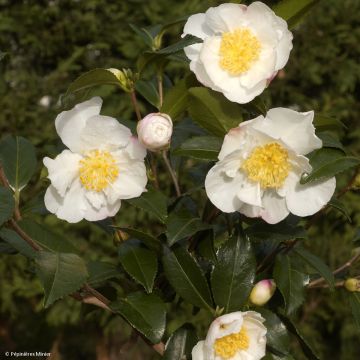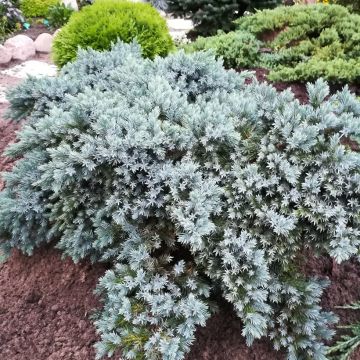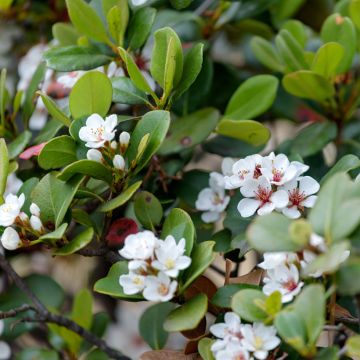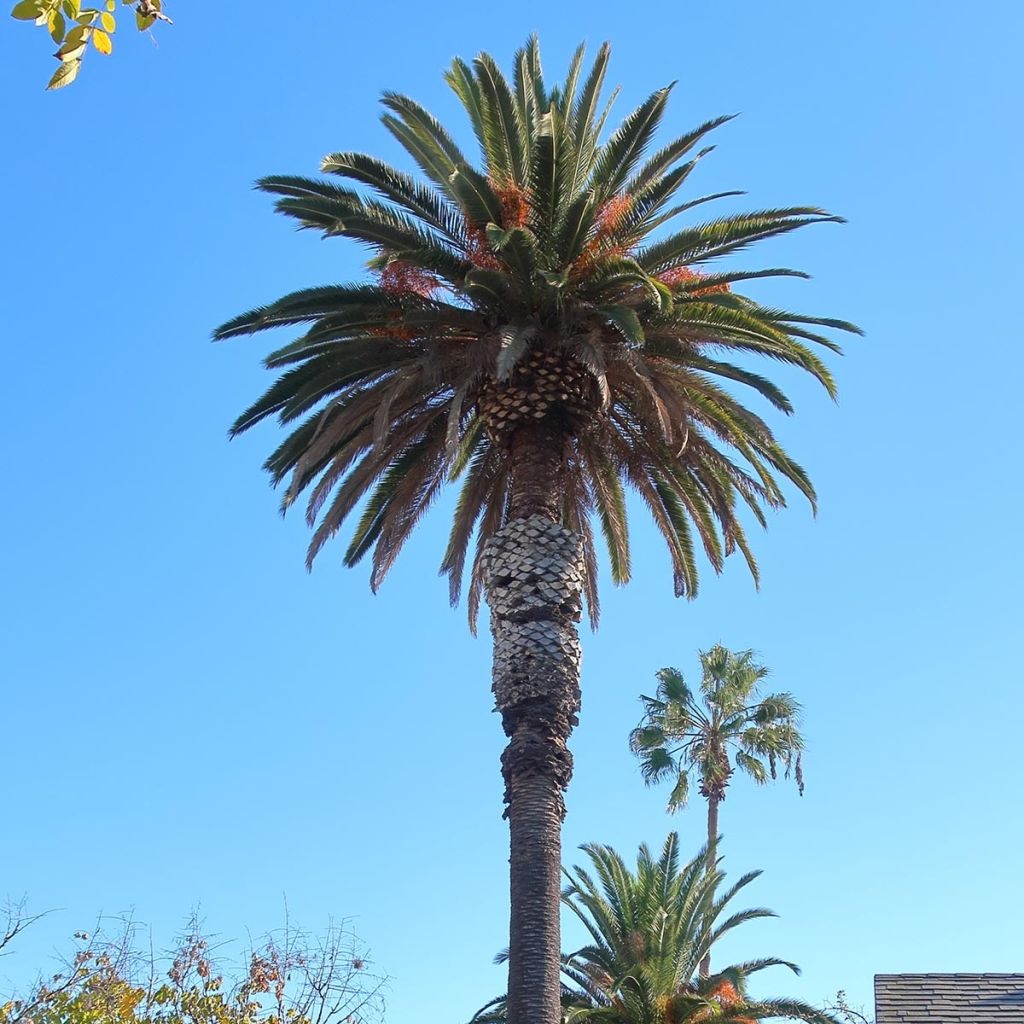

Phoenix andamanensis - Palmier des îles Andaman
Phoenix andamanensis
Phoenix andamanensis
Special offer!
Receive a €20 voucher for any order over €90 (excluding delivery costs, credit notes, and plastic-free options)!
1- Add your favorite plants to your cart.
2- Once you have reached €90, confirm your order (you can even choose the delivery date!).
3- As soon as your order is shipped, you will receive an email containing your voucher code, valid for 3 months (90 days).
Your voucher is unique and can only be used once, for any order with a minimum value of €20, excluding delivery costs.
Can be combined with other current offers, non-divisible and non-refundable.
Why not try an alternative variety in stock?
View all →This plant carries a 24 months recovery warranty
More information
We guarantee the quality of our plants for a full growing cycle, and will replace at our expense any plant that fails to recover under normal climatic and planting conditions.
Does this plant fit my garden?
Set up your Plantfit profile →
Description
The Phoenix andamanensis derives its species name from the Andaman Islands in India, where it was discovered and is currently endangered. It is related to the famous Phoenix canariensis, but shares more characteristics with the graceful Phoenix rupicola, a native species of the Himalayan foothills that is unfortunately more susceptible to cold. With a tall and smooth trunk, topped by a magnificent bouquet of shiny, arching fronds meticulously arranged in a spherical crown, it captivates with its elegance and resemblance to a graceful little coconut tree, perfectly embodying the ideal of a palm tree in the collective imagination. Recently introduced into cultivation, this species will delight knowledgeable collectors!
The Phoenix andamanensis belongs to the large family of Arecaceae. Native to an archipelago in the Gulf of Bengal in India, it is adapted to a humid tropical climate. However, it grows in garrigue-like environments on steep terrain at altitudes between 400 and 680 meters (1312 and 2231 feet). The Andaman Palm is a tree-like plant that generally reaches a height of 10-11 meters (33-36 feet) and a width of 5-6 meters (16-20 feet) in its natural habitat.
Its trunk, called a stipe, is solitary and lacks the remnants of old petioles often seen on other palm trees. It can reach a diameter of 15 cm (6in). At its top, large semi-arching leaves develop, measuring up to 2.40 meters (8 feet) long, divided into numerous wide leaflets or pinnae arranged in the same plane. The foliage is a shiny dark green, identical on both the upper and lower sides of the leaves. Flowering occurs in summer, in the form of inflorescences that emerge between the leaves, with different appearances depending on whether they are male or female. The male inflorescences are shorter and somewhat resemble brooms, while the female inflorescences are long, pendulous, and adorned with small yellow flowers. These flowers are followed by non-edible but decorative fruits, shaped like yellow-orange dates that turn brownish when ripe.
The Phoenix andamanensis is a collector's plant with relatively poorly evaluated requirements and limits. Nevertheless, it is widely believed among specialists that it can be cultivated in a similar manner to the Phoenix rupicola. It is safer to grow it in a pot or container so that it can be protected from winter frosts. This palm tree makes a beautiful addition to a terrace during the warmer seasons, and can be moved to a winter garden or unheated conservatory during winter.
Phoenix andamanensis in pictures
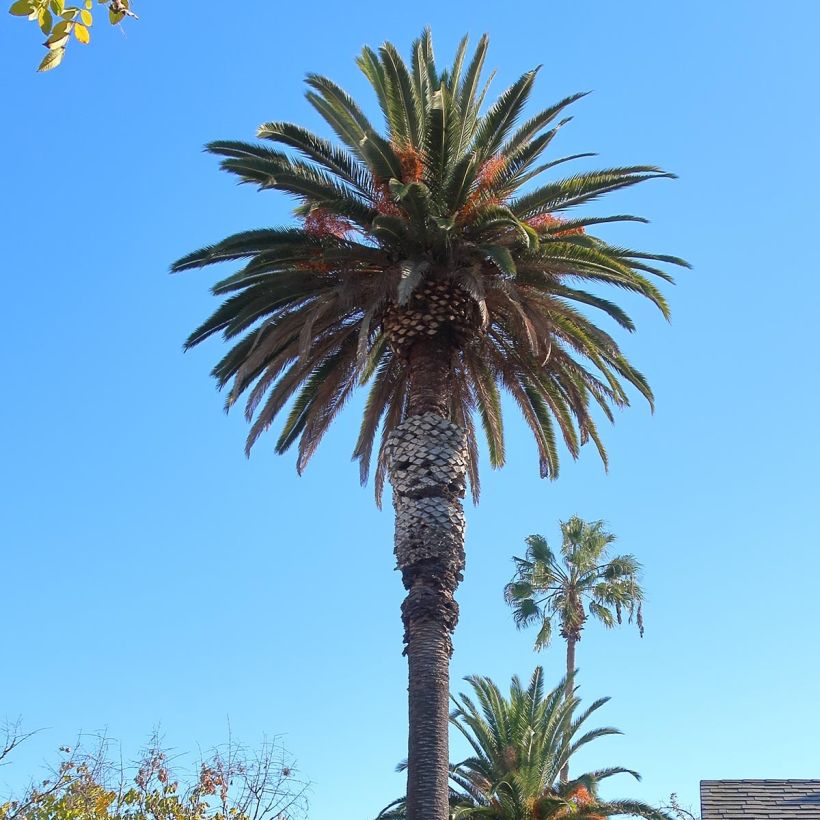

Plant habit
Flowering
Foliage
Botanical data
Phoenix
andamanensis
Arecaceae
India
Other Phoenix
View all →Planting and care
This Andaman palm tree enjoys the sun, heat, and well-drained soils that are not too dry in summer. Plant it in the ground in our mildest regions of the Mediterranean or Atlantic coast, as its hardiness is still poorly evaluated (-4 to -5°C, 24.8 to 23°F maybe a bit more, to be tested). Elsewhere, plant it in a large pot so you can shelter it in winter. It must be protected in case of announced cold, by tying the crown of leaves fairly tightly to protect the heart of the plant. Place it in the sun, in ordinary but well-worked, well-drained soil. The ideal is to plant it in soil that retains little water but is slightly moist in summer; a balanced mixture of coarse sand, potting soil, and garden soil. It requires little maintenance except for pruning the oldest leaves close to the stem.
Pot cultivation:
Choose a very large pot or a perforated bottom container, with a capacity of 75 to 100 liters. Prepare a mixture composed of 50% loamy soil, 25% potting soil, and 25% sand. Mix well. Partially fill your container, not forgetting to place a drainage layer at the bottom (clay balls, gravel, broken terracotta pots). Place your palm tree on the mixture so that the neck (the area where the roots originate) does not exceed the pot but is not buried too deeply either. Add the rest of the mixture around the root ball, firming it down. Water in several stages to thoroughly saturate the substrate with water and remove air pockets. Place your palm tree in a very bright location, avoiding excessive sunlight. Outdoors, initially place it in partial shade, avoiding full sun which can scorch its foliage. After two weeks in partial shade, you can gradually expose it to the sun. In winter, it can be placed in a frost-free greenhouse or an unheated conservatory. Occasionally mist the foliage and reduce watering. Apply organic fertilizer or compost in spring.
Diseases and pests:
Throughout southern France and Spain, large palm trees are susceptible to parasites such as the larvae of the formidable and widespread Paysandra archon, a large butterfly that thrives as far as England. Specific treatments are now available as a preventive measure. The red palm weevil (Rhynchophorus ferrugineus) has been present since 2006. The symptoms are as follows: cut, dried, or yellowing fronds. These pests attack many palm species, with a fatal outcome: the leaves irreversibly and completely dry out as soon as the heart of the stem houses larvae.
Planting period
Intended location
Care
Planting & care advice
This item has not been reviewed yet - be the first to leave a review about it.
Similar products
Haven't found what you were looking for?
Hardiness is the lowest winter temperature a plant can endure without suffering serious damage or even dying. However, hardiness is affected by location (a sheltered area, such as a patio), protection (winter cover) and soil type (hardiness is improved by well-drained soil).

Photo Sharing Terms & Conditions
In order to encourage gardeners to interact and share their experiences, Promesse de fleurs offers various media enabling content to be uploaded onto its Site - in particular via the ‘Photo sharing’ module.
The User agrees to refrain from:
- Posting any content that is illegal, prejudicial, insulting, racist, inciteful to hatred, revisionist, contrary to public decency, that infringes on privacy or on the privacy rights of third parties, in particular the publicity rights of persons and goods, intellectual property rights, or the right to privacy.
- Submitting content on behalf of a third party;
- Impersonate the identity of a third party and/or publish any personal information about a third party;
In general, the User undertakes to refrain from any unethical behaviour.
All Content (in particular text, comments, files, images, photos, videos, creative works, etc.), which may be subject to property or intellectual property rights, image or other private rights, shall remain the property of the User, subject to the limited rights granted by the terms of the licence granted by Promesse de fleurs as stated below. Users are at liberty to publish or not to publish such Content on the Site, notably via the ‘Photo Sharing’ facility, and accept that this Content shall be made public and freely accessible, notably on the Internet.
Users further acknowledge, undertake to have ,and guarantee that they hold all necessary rights and permissions to publish such material on the Site, in particular with regard to the legislation in force pertaining to any privacy, property, intellectual property, image, or contractual rights, or rights of any other nature. By publishing such Content on the Site, Users acknowledge accepting full liability as publishers of the Content within the meaning of the law, and grant Promesse de fleurs, free of charge, an inclusive, worldwide licence for the said Content for the entire duration of its publication, including all reproduction, representation, up/downloading, displaying, performing, transmission, and storage rights.
Users also grant permission for their name to be linked to the Content and accept that this link may not always be made available.
By engaging in posting material, Users consent to their Content becoming automatically accessible on the Internet, in particular on other sites and/or blogs and/or web pages of the Promesse de fleurs site, including in particular social pages and the Promesse de fleurs catalogue.
Users may secure the removal of entrusted content free of charge by issuing a simple request via our contact form.
The flowering period indicated on our website applies to countries and regions located in USDA zone 8 (France, the United Kingdom, Ireland, the Netherlands, etc.)
It will vary according to where you live:
- In zones 9 to 10 (Italy, Spain, Greece, etc.), flowering will occur about 2 to 4 weeks earlier.
- In zones 6 to 7 (Germany, Poland, Slovenia, and lower mountainous regions), flowering will be delayed by 2 to 3 weeks.
- In zone 5 (Central Europe, Scandinavia), blooming will be delayed by 3 to 5 weeks.
In temperate climates, pruning of spring-flowering shrubs (forsythia, spireas, etc.) should be done just after flowering.
Pruning of summer-flowering shrubs (Indian Lilac, Perovskia, etc.) can be done in winter or spring.
In cold regions as well as with frost-sensitive plants, avoid pruning too early when severe frosts may still occur.
The planting period indicated on our website applies to countries and regions located in USDA zone 8 (France, United Kingdom, Ireland, Netherlands).
It will vary according to where you live:
- In Mediterranean zones (Marseille, Madrid, Milan, etc.), autumn and winter are the best planting periods.
- In continental zones (Strasbourg, Munich, Vienna, etc.), delay planting by 2 to 3 weeks in spring and bring it forward by 2 to 4 weeks in autumn.
- In mountainous regions (the Alps, Pyrenees, Carpathians, etc.), it is best to plant in late spring (May-June) or late summer (August-September).
The harvesting period indicated on our website applies to countries and regions in USDA zone 8 (France, England, Ireland, the Netherlands).
In colder areas (Scandinavia, Poland, Austria...) fruit and vegetable harvests are likely to be delayed by 3-4 weeks.
In warmer areas (Italy, Spain, Greece, etc.), harvesting will probably take place earlier, depending on weather conditions.
The sowing periods indicated on our website apply to countries and regions within USDA Zone 8 (France, UK, Ireland, Netherlands).
In colder areas (Scandinavia, Poland, Austria...), delay any outdoor sowing by 3-4 weeks, or sow under glass.
In warmer climes (Italy, Spain, Greece, etc.), bring outdoor sowing forward by a few weeks.






























